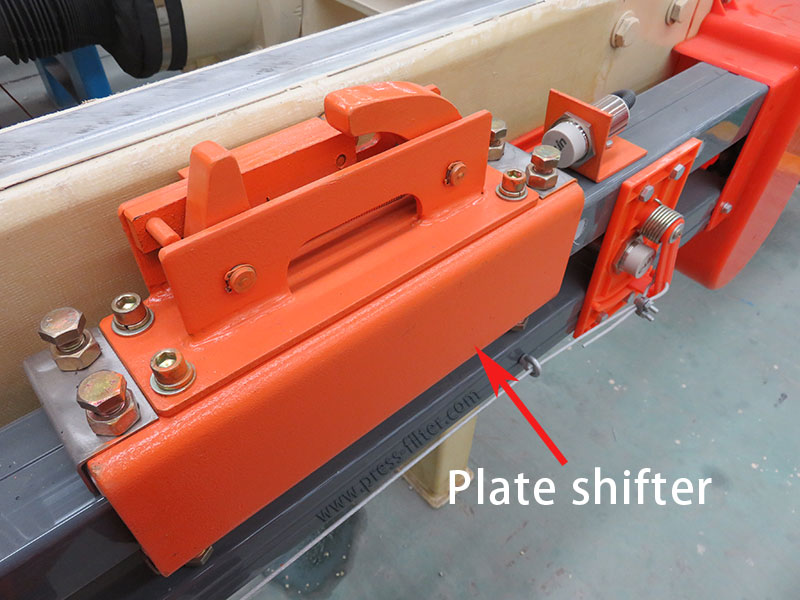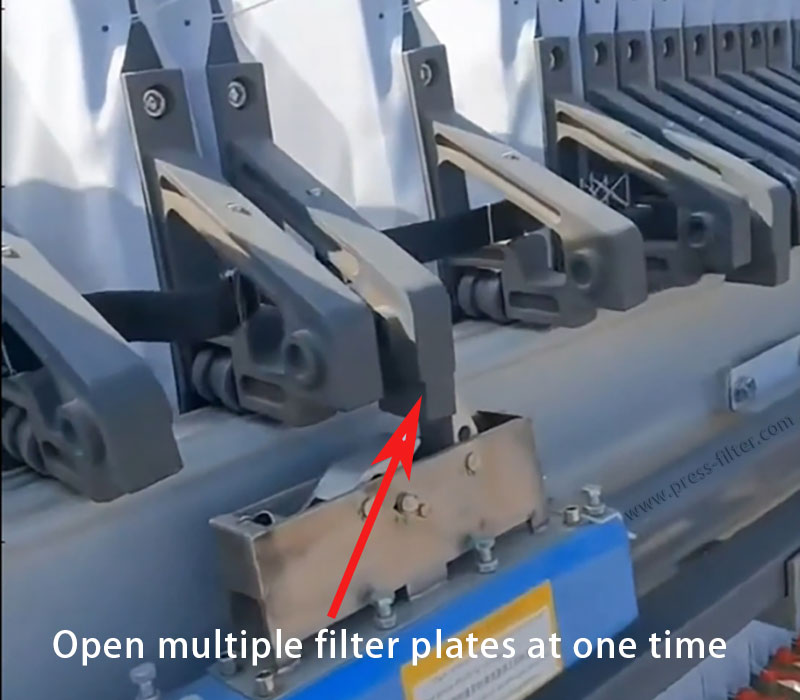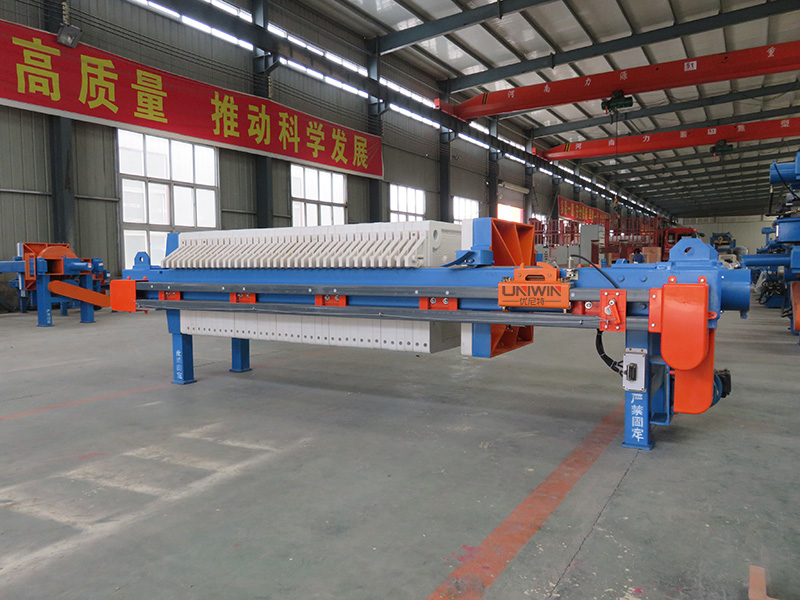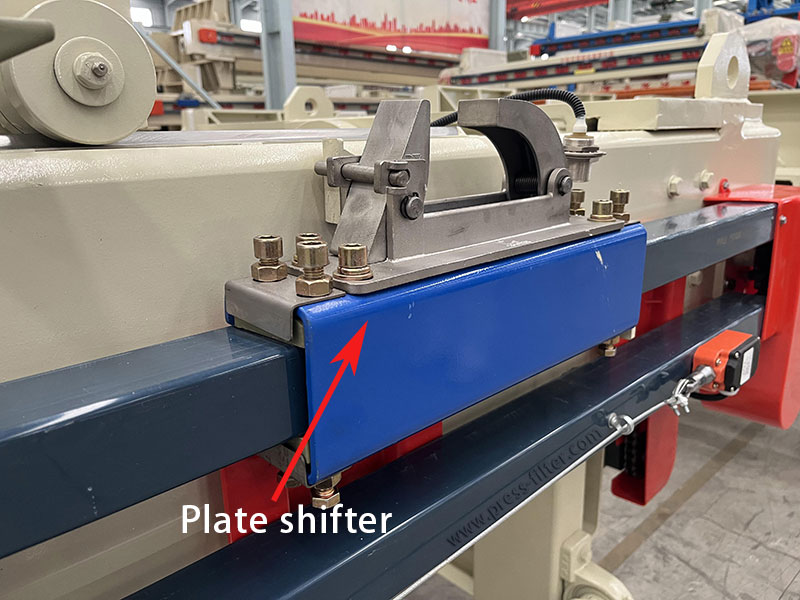What Is the Optimal Speed of the Plate Shifter?
The filter press plate shifter is a key component in the filter press system. It is mainly used to pull the filter plates apart piece by piece after the filtration cycle is completed in order to discharge and clean the filter cake. This process is usually automated, and the plate shifter is used to achieve the sequential movement and separation of the filter plates. So, what is the optimal speed of the plate shifter? This article will introduce it to you in detail.
Factors Affecting the Speed of Filter Plate Shifter
Generally, the speed of the plate shifter is set between 0.1-0.3 m/s. The specific optimal speed needs to be determined based on the equipment manufacturer’s recommendations and actual operating experience. When optimizing the speed of the plate shifter, the following points can be considered:
Models and specifications of filter presses: Filter presses of different models and specifications have different requirements for the speed of the trolley. Generally speaking, large filter presses require lower moving speeds to ensure sufficient pressure and filtering effect, while small filter presses can increase the speed appropriately to improve production efficiency.
Filter plate weight: The weight of the filter plates will directly affect the speed at which the plate shifter operates. Heavier filter plates require more pulling force, so the speed may need to be reduced to avoid equipment damage.
Material properties: The properties of the material also affect the speed of the plate shifter. For example, for materials that are easy to filter, the speed can be appropriately increased, while for materials that are difficult to filter, the speed needs to be reduced to ensure a better filtering effect.
Filter press design requirements: Different filter press design requirements also have different plate shifter speeds. For example, some filter press designs require the plate shifter to move quickly to shorten the filtering time, while others require slow movement to ensure the filtering effect.
Production process requirements: The production process requirements will also affect the speed of the plate shifter. If the production process requires a continuous and efficient production process, a higher speed may be required, while if the production process needs to ensure product quality and stability, the speed may need to be reduced to obtain a better filtering effect.
Optimization of the Plate Shifter of the Filter Press
In order to obtain the best filtering effect and production efficiency, the speed of the plate shifter of the filter press needs to be optimized. The following are some common optimization methods:
- Select a suitable speed range according to the properties of the material and the model specifications of the filter press. Generally speaking, the manufacturer will provide a recommended speed range, and the user can choose according to the actual situation.
- Choose a suitable speed according to the weight of the filter plate. If the weight of the filter plate is too large, the speed of the plate shifter should be appropriately reduced to avoid damage to the equipment.
- Determine the best plate shifter speed through experiments. Users can test the filtering effect and production efficiency of the filter press at different speeds through experiments to select the best speed.
- Adjust the speed according to the requirements of the production process. If the production process requires a continuous and efficient production process, the speed can be appropriately increased; if it is necessary to ensure product quality and stability, the speed needs to be reduced to obtain better filtering effects.
- Adjust in combination with actual operation conditions. During actual operation, users can adjust the plate shifter speed according to the operation and production efficiency of the filter press to achieve the best filtering effect and production efficiency.
Conclusion
The speed setting of the plate shifter of the filter press needs to be selected and adjusted according to the actual situation. By comprehensively considering the model specifications of the filter press, the weight of the filter plate, the properties of the material, the design requirements, and the requirements of the production process, the user can find the best plate shifter speed, thereby improving the overall performance and efficiency of the filter press. The user also needs to pay attention to comply with the relevant safety operating procedures to ensure the safe and stable operation of the filter press.





